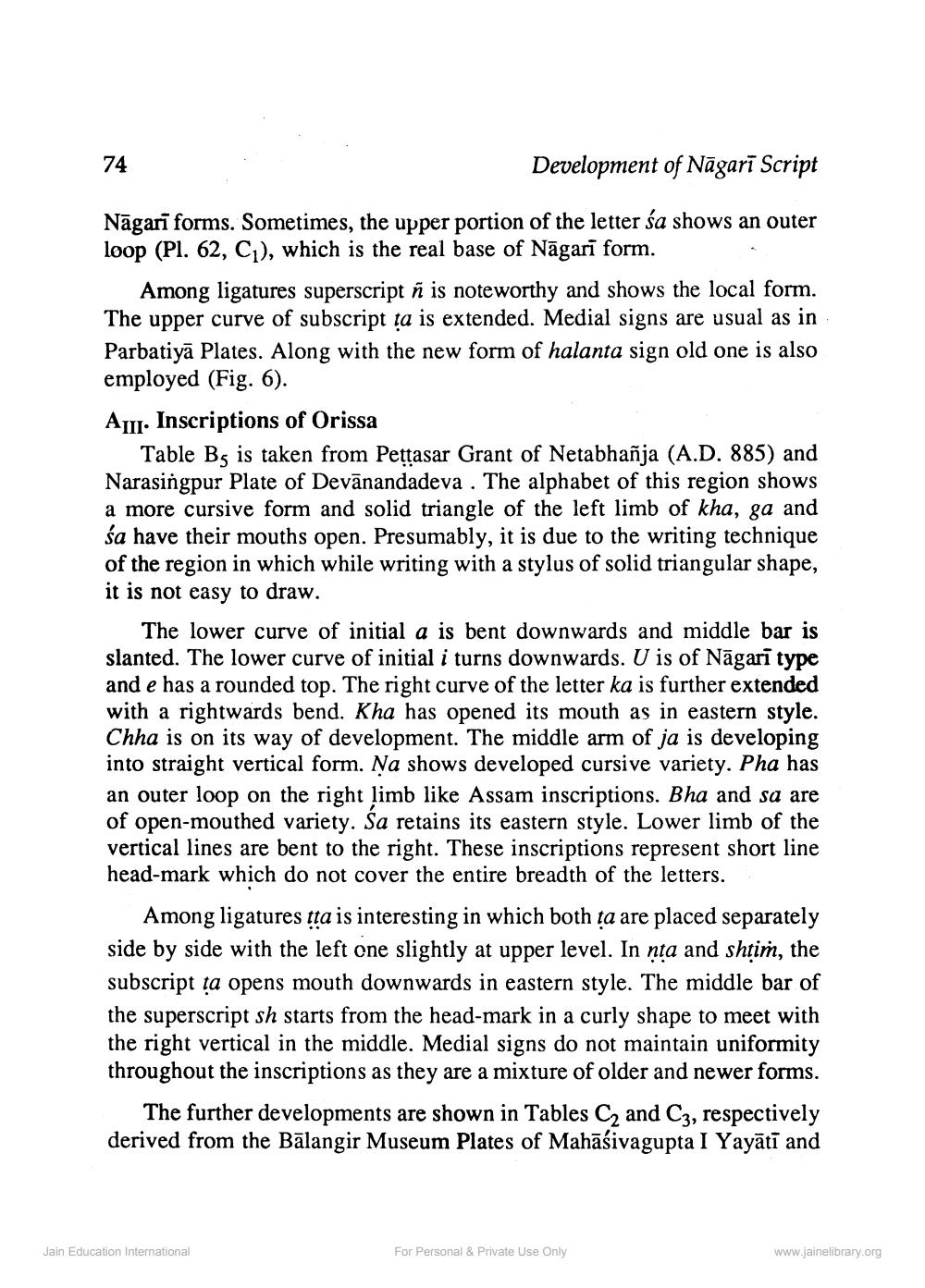________________
74
Development of Nāgarī Script
Nāgarī forms. Sometimes, the upper portion of the letter sa shows an outer loop (Pl. 62, C1), which is the real base of Nāgarī form.
Among ligatures superscript ñ is noteworthy and shows the local form. The upper curve of subscript ta is extended. Medial signs are usual as in Parbatiyā Plates. Along with the new form of halanta sign old one is also employed (Fig. 6). A111. Inscriptions of Orissa
Table Bs is taken from Petrasar Grant of Netabhañja (A.D. 885) and Narasingpur Plate of Devānandadeva . The alphabet of this region shows a more cursive form and solid triangle of the left limb of kha, ga and sa have their mouths open. Presumably, it is due to the writing technique of the region in which while writing with a stylus of solid triangular shape, it is not easy to draw.
The lower curve of initial a is bent downwards and middle bar is slanted. The lower curve of initial i turns downwards. U is of Nāgari type and e has a rounded top. The right curve of the letter ka is further extended with a rightwards bend. Kha has opened its mouth as in eastern style. Chha is on its way of development. The middle arm of ja is developing into straight vertical form. Na shows developed cursive variety. Pha has an outer loop on the right limb like Assam inscriptions. Bha and sa are of open-mouthed variety. Sa retains its eastern style. Lower limb of the vertical lines are bent to the right. These inscriptions represent short line head-mark which do not cover the entire breadth of the letters.
Among ligatures tta is interesting in which both ța are placed separately side by side with the left one slightly at upper level. In nta and shtim, the subscript ta opens mouth downwards in eastern style. The middle bar of the superscript sh starts from the head-mark in a curly shape to meet with the right vertical in the middle. Medial signs do not maintain uniformity throughout the inscriptions as they are a mixture of older and newer forms.
The further developments are shown in Tables C and C3, respectively derived from the Bālangir Museum Plates of Mahāśivagupta I Yayāti and
Jain Education International
For Personal & Private Use Only
www.jainelibrary.org




